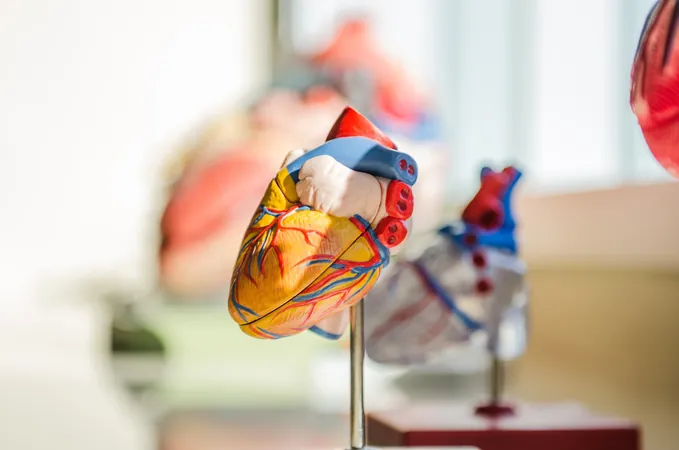
The Heart's Own Beat: How Early Contractions Shape Its Development
2025-08-06
Author: Yu
Revolutionary Discoveries in Heart Development
Researchers at the Francis Crick Institute have made groundbreaking revelations about the heart's development, revealing that the organ's own contractions play a pivotal role in shaping its structure. This study, conducted using transparent zebrafish, shines a light on the heart's ability to adapt and remodel itself according to physiological needs, potentially unlocking answers to congenital heart diseases.
The Heart: Nature's First and Fundamental Organs
As the first organ to form in a developing embryo, the heart is crucial for supplying oxygen and nutrients necessary for survival. However, the transformation from a simple tubular structure to a complex, beating pump has puzzled scientists for ages.
Real-Time Insights into Heart Growth
Published in the journal Developmental Cell, the study employed live 4D imaging to observe the early development of trabeculae—muscular structures within the zebrafish heart. These hearts share vital genetic and structural traits with human hearts but offer a unique advantage of transparency, allowing researchers to monitor growth intricately in real-time.
A Twist on Growth: How Trabeculae Develop
Contrary to previous beliefs that trabeculae grow solely through cell division, the study found that neighboring cells collaborate to enhance the complexity of these structures, ultimately boosting muscle mass and contractile efficiency. This discovery could change the way we understand heart muscle development.
A Unique Feedback Mechanism at Play
The team also identified a fascinating feedback loop where the heart's contractions and its own development communicate. As trabeculae grow and the heart beats stronger, it sends mechanical signals that soften surrounding cells, enabling them to stretch and grow. This process allows the heart to expand by an impressive 90%, enhancing its blood-filling ability.
Stabilizing Growth for a Healthy Heart
This intricate feedback system is crucial for maintaining a healthy growth rate. As heart cells stretch, they begin to stabilize trabecular growth by losing their capability to be recruited, ensuring that the heart develops appropriately.
Looking to the Future: Understanding Heart Flexibility
Toby Andrews, a postdoctoral fellow and lead author, emphasized the importance of this research: "While the heartbeat is tied to life, how it molds itself into the right shape remains one of science's mysteries. Our findings indicate that the heart's design is not fixed; it adapts intelligently to physiological demands. This flexibility is crucial for devising future heart disease treatments."
Future Research Directions
The research team is eager to delve deeper into how trabecular structures evolve into their intricate sponge-like patterns, regulating blood flow and identifying the cellular processes and molecular mechanisms that create these complex frameworks. Stay tuned for more revelations that could reshape our understanding of heart development!


 Brasil (PT)
Brasil (PT)
 Canada (EN)
Canada (EN)
 Chile (ES)
Chile (ES)
 Česko (CS)
Česko (CS)
 대한민국 (KO)
대한민국 (KO)
 España (ES)
España (ES)
 France (FR)
France (FR)
 Hong Kong (EN)
Hong Kong (EN)
 Italia (IT)
Italia (IT)
 日本 (JA)
日本 (JA)
 Magyarország (HU)
Magyarország (HU)
 Norge (NO)
Norge (NO)
 Polska (PL)
Polska (PL)
 Schweiz (DE)
Schweiz (DE)
 Singapore (EN)
Singapore (EN)
 Sverige (SV)
Sverige (SV)
 Suomi (FI)
Suomi (FI)
 Türkiye (TR)
Türkiye (TR)
 الإمارات العربية المتحدة (AR)
الإمارات العربية المتحدة (AR)